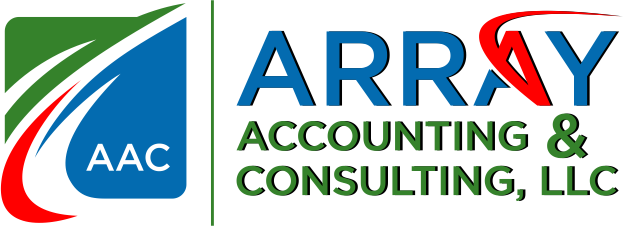Mastering Grant Fund Allocation: Ensuring Compliance & Avoiding Costly Errors
- Array Accounting & Consulting

- Mar 5
- 3 min read

Grant funding is a critical resource for nonprofits, enabling organizations to expand their impact and sustain key programs. However, misallocating grant funds can lead to compliance violations, financial penalties, and even loss of future funding opportunities. Nonprofit leaders and financial managers must ensure proper fund allocation to maximize grant benefits while adhering to strict regulatory requirements.
This guide provides best practices for effective grant fund allocation, ensuring compliance, and preventing costly errors.
1. Understand Grant Restrictions & Compliance Requirements
Each grant comes with specific terms and conditions that dictate how funds can be used. Nonprofits must carefully review and adhere to these guidelines to avoid compliance issues.
Key Compliance Considerations:
Restricted vs. Unrestricted Funds: Many grants specify that funds must be used for designated purposes. Misuse of restricted funds can result in legal and financial repercussions.
Matching Fund Requirements: Some grants require the nonprofit to provide matching funds. Failure to meet this obligation may result in a loss of funding.
Spending Deadlines: Many grants have strict timelines for when funds must be used. Unspent funds may need to be returned.
Reporting Obligations: Grantors typically require detailed financial and programmatic reports. Ensuring accurate reporting is essential for maintaining future eligibility.
2. Develop a Grant Budget Aligned with Fund Requirements
Creating a detailed grant budget is essential for proper fund allocation. According to the Grant Professionals Association (2023), 72% of grant-related compliance issues stem from budget mismanagement.
Grant Budget Best Practices:
Break Down Expenses by Category: Clearly define costs such as salaries, program expenses, administrative costs, and indirect costs.
Align Budget with Grant Goals: Ensure that expenditures directly support the grant’s intended objectives.
Account for Indirect Costs: Some grants allow a percentage of funds to cover administrative overhead. Confirm the allowable rate in advance.
Include a Contingency Plan: Unexpected costs may arise, so having a flexible budget within the grant’s guidelines is crucial.
3. Implement Strong Internal Financial Controls
To prevent misallocation and ensure compliance, nonprofits must establish rigorous internal financial controls. The Association of Certified Fraud Examiners (2023) found that weak internal controls contribute to 45% of nonprofit financial mismanagement cases.
Key Financial Controls:
Segregation of Duties: Assign different individuals to approve expenses, process payments, and conduct financial reconciliations.
Regular Financial Audits: Conduct periodic internal and external audits to identify potential issues early.
Expense Pre-Approval Policies: Require pre-approval for all grant-related expenditures to ensure compliance.
Grant-Specific Accounts: Create separate accounting codes to grant funds to track funds properly.
4. Track and Monitor Grant Spending in Real-Time
Accurate tracking of grant expenditures is vital for compliance and reporting. The Nonprofit Technology Network (2023) found that organizations using financial tracking software reduce compliance errors by 40%.
Effective Tracking Methods:
Use Cloud-Based Accounting Software: Tools like Blackbaud or Sage Intacct allow real-time tracking of grant expenditures.
Categorize Grant Expenses Separately: Clearly differentiate grant-related expenses from general operating costs.
Monitor Spending Against Budget: Regularly compare actual spending to the approved grant budget to prevent over- or underspending.
Automate Financial Reports: Generate grantor-specific reports to ensure compliance with grantor requirements.
5. Ensure Timely and Accurate Grant Reporting
Failure to meet reporting requirements can jeopardize future funding. Grantors expect transparency and detailed documentation on how grant money is spent.
Best Practices for Grant Reporting:
Follow Grantors’ Reporting Schedules: Adhere to all deadlines for financial and programmatic reports.
Provide Clear Expense Documentation: Keep receipts, invoices, and payroll records to substantiate expenditures.
Use Data-Driven Impact Reporting: Link financial data with program outcomes to demonstrate how the grant contributed to the nonprofit’s mission.
Maintain an Organized Audit Trail: Store all grant-related financial records properly at all times.
6. Train Staff & Board Members on Grant Compliance
A well-informed team reduces the risk of grant mismanagement. According to Charity Navigator (2023), nonprofits with ongoing financial training programs are 60% more likely to maintain compliance with funding requirements.
Training Strategies:
Host Regular Compliance Workshops: Educate staff and board members on grant terms and financial management.
Create a Grant Management Handbook: Document policies, procedures, and best practices for staff reference.
Assign a Dedicated Grant Manager: Having a designated individual to oversee grant compliance can streamline fund allocation and reporting.
Encourage Cross-Departmental Coordination: Program and finance teams should collaborate to ensure alignment between spending and grant goals.
Final Thoughts: Strengthening Grant Management for Long-Term Success
Mastering grant fund allocation requires strategic planning, diligent tracking, and strong internal controls. By implementing these best practices, nonprofits can enhance compliance, avoid costly errors, and maintain positive relationships with grantors.
Need Expert Guidance on Grant Fund Management?
At Array Accounting & Consulting, we specialize in nonprofit financial management, grant compliance, and strategic budgeting. Contact us today to ensure your nonprofit maximizes funding while staying compliant.





Comments